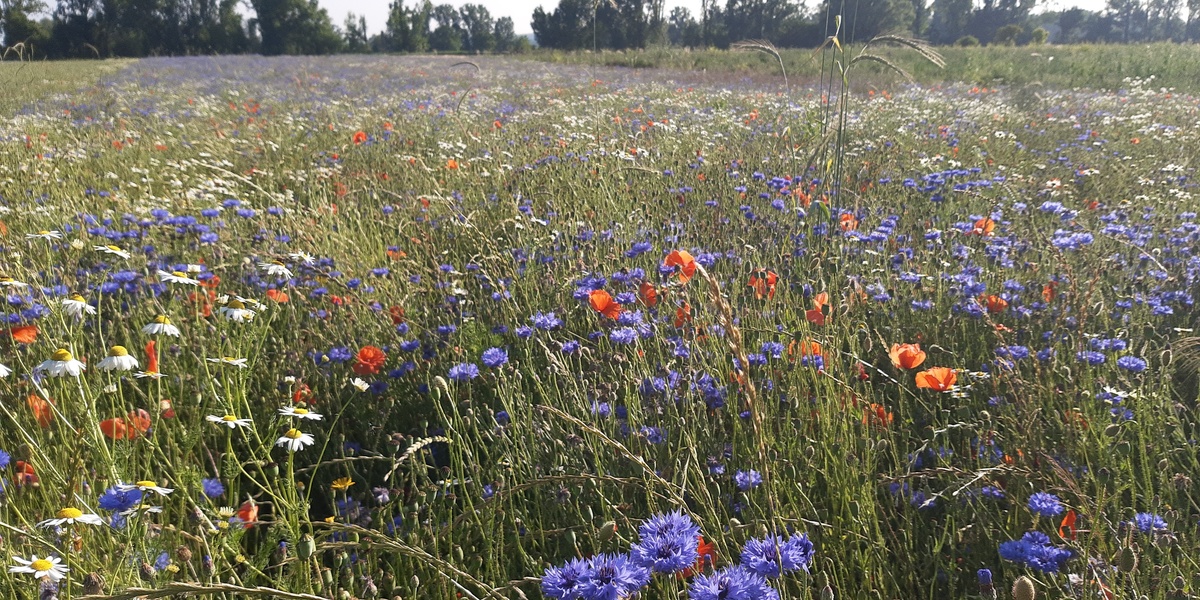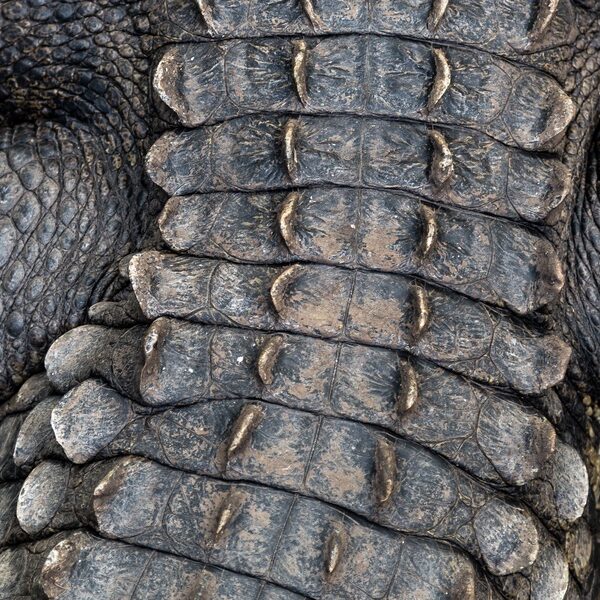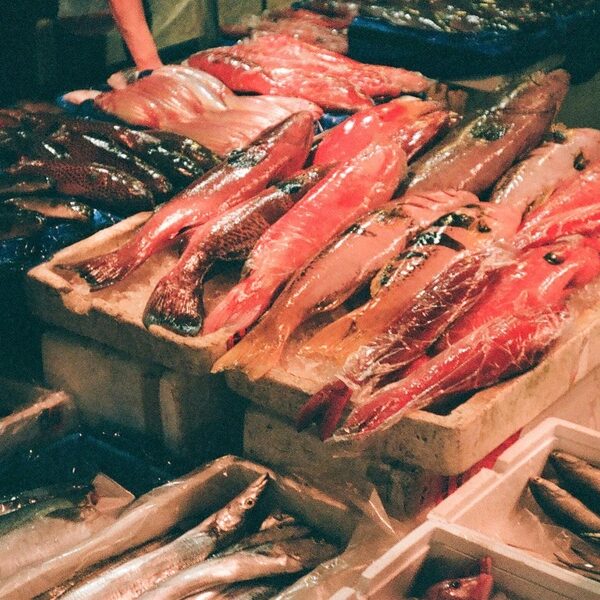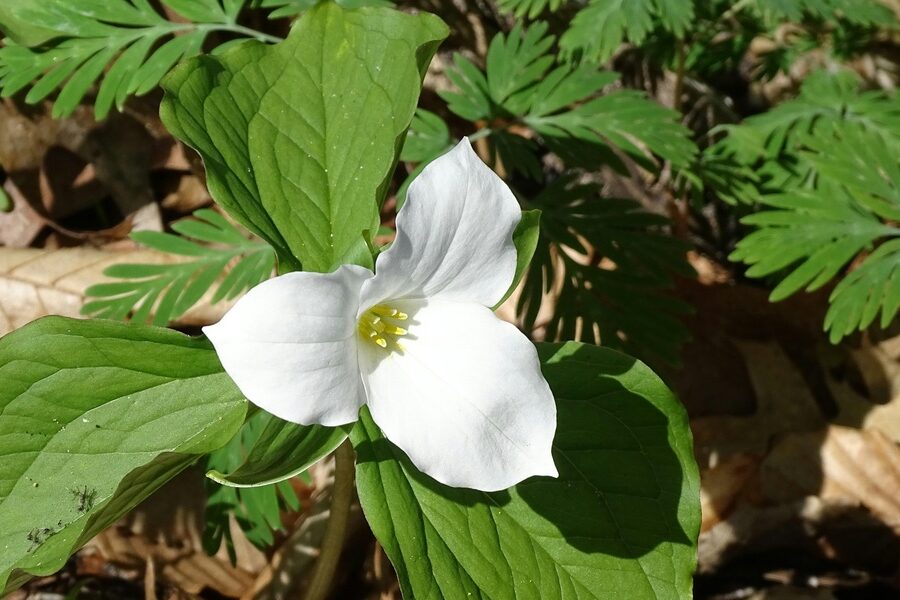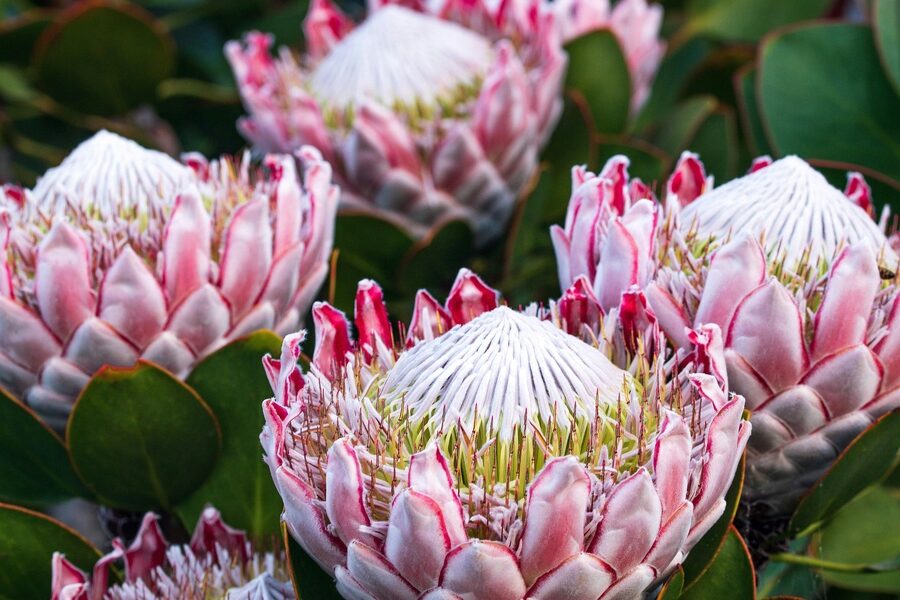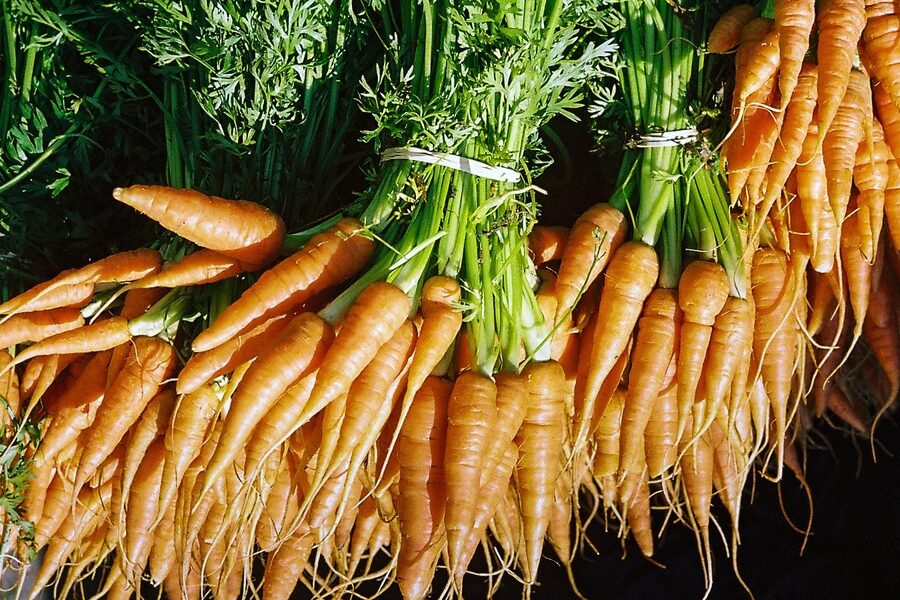England’s countryside is a tapestry of rolling hills, ancient woodlands, and coastal paths, each habitat nurturing a unique collection of wild flora. From delicate blossoms hidden in the undergrowth to vibrant splashes of color in open meadows, the nation’s plant life offers a continuous display of natural beauty throughout the seasons.
To celebrate this botanical richness, we’ve compiled a complete list of 59 Flowers of England. This collection spans the country’s floral spectrum, featuring species from the elusive Bee orchid to the cheerful Yellow rattle. For each flower, you’ll find essential details organized by Scientific Name, Typical Habitat, and Blooming Season, all presented for your easy reference below.
Are all the flowers on this list native to England?
While this list focuses on common and notable wildflowers found across England, it’s important to distinguish between truly native species and those that have been naturalized over time. Native plants originated in England without human intervention, adapting to the local climate and ecosystems. Naturalized species, though introduced, have established stable populations and now grow wild, often contributing significantly to the landscape. We include both types to offer a comprehensive view of the wild flora you’re likely to encounter.
Flowers of England
| Common Name | Scientific Name | Typical Habitat | Blooming Season |
|---|---|---|---|
| Bluebell | Hyacinthoides non-scripta | Woodlands, shady hedgerows | April–May |
| Common poppy | Papaver rhoeas | Arable fields, roadside verges, disturbed ground | May–July |
| Oxeye daisy | Leucanthemum vulgare | Meadows, roadside verges, grassland | June–August |
| Foxglove | Digitalis purpurea | Woodland edges, heaths, disturbed ground | June–August |
| Meadow buttercup | Ranunculus acris | Meadows, pastures, roadside verges | May–July |
| Cowslip | Primula veris | Meadows, roadside banks, open woodland | April–May |
| Primrose | Primula vulgaris | Woodland clearings, hedgerows, grassy banks | February–May |
| Common heather | Calluna vulgaris | Heathland, moorland, acid grassland | July–September |
| Bell heather | Erica cinerea | Heathland, dry acid soils | June–September |
| Wild garlic | Allium ursinum | Damp woodlands, riverbanks, shady hedgerows | April–May |
| Lily of the valley | Convallaria majalis | Shady woodlands, gardens, hedgerows | April–May |
| Snowdrop | Galanthus nivalis | Woodlands, lawns, hedgerows | January–March |
| Red campion | Silene dioica | Woodland edges, hedgerows, meadows | May–September |
| White campion | Silene latifolia | Roadsides, waste ground, hedgerows | May–October |
| Greater stitchwort | Stellaria holostea | Hedgerows, woodland edges, grassy banks | March–May |
| Dog violet | Viola riviniana | Woodland floors, grassy banks, hedgerows | April–June |
| Sweet violet | Viola odorata | Woodland edges, shaded banks, old gardens | February–April |
| Sea thrift | Armeria maritima | Coastal cliffs, saltmarsh edges, shingle | May–July |
| Sea campion | Silene uniflora | Rocky coasts, cliffs, shingle shores | May–August |
| Sea holly | Eryngium maritimum | Sandy dunes, shingle foreshores | June–August |
| Germander speedwell | Veronica chamaedrys | Meadows, woodland edges, grassland | April–June |
| Red clover | Trifolium pratense | Meadows, roadside verges, grassland | May–September |
| White clover | Trifolium repens | Lawns, meadows, pastures, roadside verges | April–September |
| Bird’s-foot trefoil | Lotus corniculatus | Grassland, coastal grass, roadside verges | May–September |
| Common knapweed | Centaurea nigra | Meadows, roadside verges, disturbed grassland | June–September |
| Yarrow | Achillea millefolium | Meadows, roadside verges, grassland | June–September |
| Meadowsweet | Filipendula ulmaria | Damp meadows, riverbanks, fens | June–August |
| St John’s-wort | Hypericum perforatum | Grassland, roadside banks, chalk downland | June–August |
| Common mallow | Malva sylvestris | Roadsides, waste ground, hedgerows | June–September |
| Ragwort | Jacobaea vulgaris | Roadsides, rough grassland, wasteland | June–October |
| Selfheal | Prunella vulgaris | Grassland, churchyards, lawns | May–September |
| Field scabious | Knautia arvensis | Meadows, roadside verges, calcareous grassland | June–September |
| Devil’s-bit scabious | Succisa pratensis | Meadows, damp grassland, heathland | July–September |
| Common spotted orchid | Dactylorhiza fuchsii | Meadows, roadside verges, woodland clearings | May–July |
| Bee orchid | Ophrys apifera | Chalk grassland, calcareous soils, roadside banks | May–July |
| Early purple orchid | Orchis mascula | Woodland, grassland, roadside verges | March–May |
| Pyramid orchid | Anacamptis pyramidalis | Chalk downland, coastal grass, dry meadows | May–July |
| Marsh marigold | Caltha palustris | Wet meadows, stream margins, ditches | March–May |
| Purple loosestrife | Lythrum salicaria | Marshes, reedbeds, riverbanks | June–August |
| Yellow rattle | Rhinanthus minor | Meadows, unimproved grassland, roadside verges | June–August |
| Cuckooflower | Cardamine pratensis | Damp meadow, riverbanks, pastures | April–May |
| Wild thyme | Thymus serpyllum | Dry grassland, coastal cliffs, rocky ground | June–August |
| Harebell | Campanula rotundifolia | Heathland, moorland, coastal grass, chalk downland | June–September |
| Bugle | Ajuga reptans | Woodland floors, hedgerows, damp grassland | April–June |
| Oxlip | Primula elatior | Ancient woodland, shady banks, calcareous soils | April–May |
| Ragged robin | Lychnis flos-cuculi | Wet meadows, fens, damp grassland | May–July |
| Common vetch | Vicia sativa | Field margins, meadows, roadside verges | May–September |
| Wild carrot | Daucus carota | Roadsides, meadows, field margins | June–September |
| Yellow flag iris | Iris pseudacorus | Ponds, ditches, marshes, wetland edges | May–July |
| Sea aster | Aster tripolium | Saltmarshes, estuaries, muddy coasts | July–September |
| Field forget-me-not | Myosotis arvensis | Meadows, arable margins, disturbed ground | April–July |
| Twayblade | Neottia ovata | Woodland floors, grassland, shaded banks | May–June |
| Garlic mustard | Alliaria petiolata | Hedgerows, shady banks, disturbed ground | March–June |
| Common toadflax | Linaria vulgaris | Roadsides, field margins, dry grassland | June–September |
| Goat’s-beard (Salsify) | Tragopogon pratensis | Roadsides, grassland, disturbed ground | May–August |
| Lungwort | Pulmonaria officinalis | Shady woodlands, hedgerows, gardens | March–May |
| Meadow cranesbill | Geranium pratense | Meadows, riverbanks, hedgerows | May–August |
| Lady’s bedstraw | Galium verum | Dry grassland, calcareous downland, dunes | June–August |
| Hemp agrimony | Eupatorium cannabinum | Wet ditches, riverbanks, marshes | July–September |
Images and Descriptions
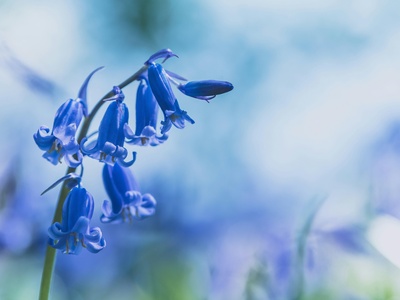
Bluebell
Iconic spring woodland flower forming blue carpets under trees; nodding, bell-shaped violet-blue flowers on slender stems. Important for pollinators and a cultural symbol of ancient, semi-natural woods across England.
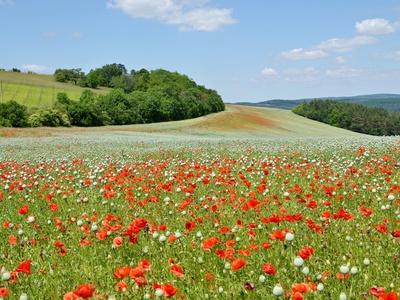
Common poppy
Bright scarlet, papery flowers often seen in cereal fields and roadsides. Annual that thrives on disturbed soil; cultural emblem of remembrance and attractive to bees and hoverflies.
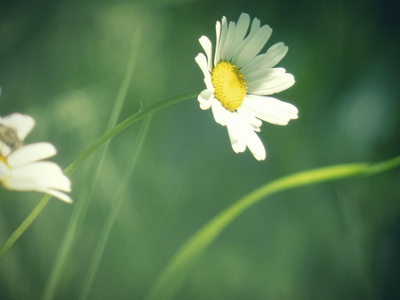
Oxeye daisy
Classic white-petaled daisy with yellow central disc. Perennial meadow species that supports insects and adds open-country charm; common in unimproved grassland and roadside banks.
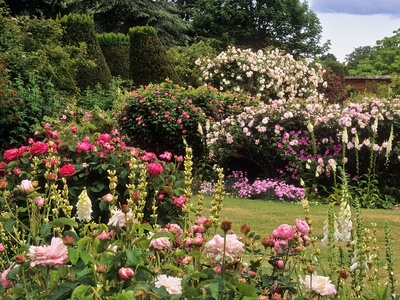
Foxglove
Tall spikes of tubular, spotted bell-flowers in pinks, purples and whites. Biennial or short-lived perennial common on acidic soils; nectar-rich but poisonous if ingested.
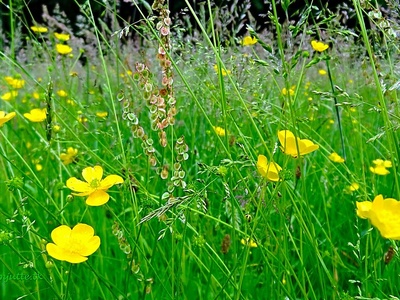
Meadow buttercup
Shiny yellow, cup-shaped flowers on erect stems; common in unimproved grassland. Perennial that can indicate old meadows and provides forage for many invertebrates despite its acrid taste to livestock.
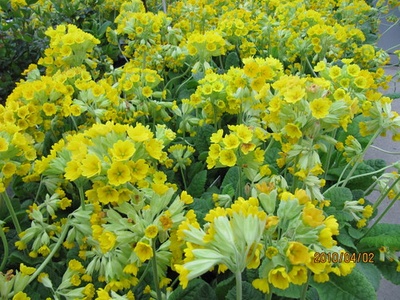
Cowslip
Clusters of fragrant, bell-shaped yellow flowers atop stalks in spring. A traditional cottage-garden favourite and meadow specialist, often found on calcareous soils and grazed grassland.
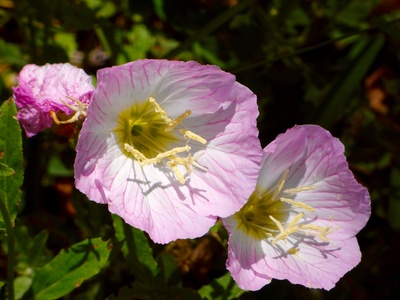
Primrose
Pale yellow rosettes of early spring flowers, often seen singly in shaded spots. A hardy perennial; important early nectar source for pollinators and common in hedgerows and mature gardens.
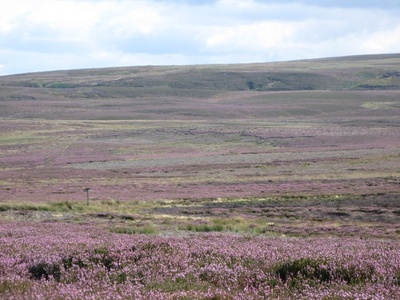
Common heather
Low evergreen shrub with dense spikes of tiny pink-purple bell-flowers. Dominant on acidic heath and moorland, providing nectar for bees and supporting specialised wildlife communities.
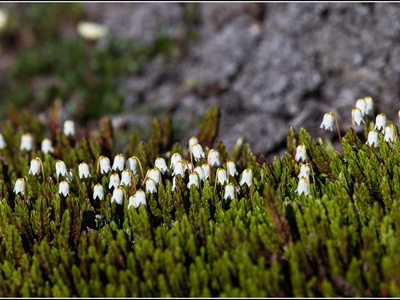
Bell heather
Small evergreen shrub with deep purple bell-shaped flowers. Widespread on heaths and acidic grasslands, providing summer nectar and complementing common heather in moorland mosaics.
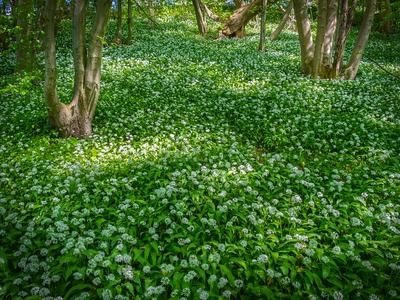
Wild garlic
Strongly scented leaves and clusters of white starry flowers in spring. Forms dense carpets in damp woodlands; edible leaves used historically in cooking when identified correctly.
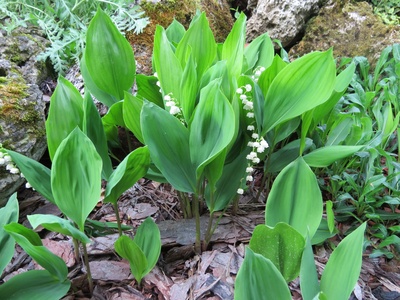
Lily of the valley
Drooping strings of fragrant, white bell-flowers on low stems among glossy leaves. A spring-flowering woodland perennial often found in ancient woods and shaded garden borders.
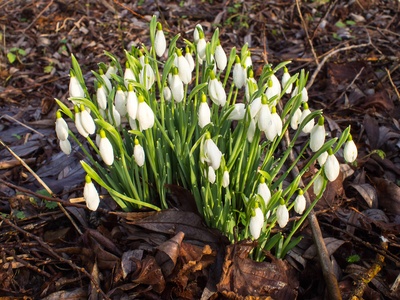
Snowdrop
Early, delicate white nodding flowers often appearing through late winter snow. Favoured in ancient woodland and old gardens; heralds the approach of spring and attracts early pollinators.
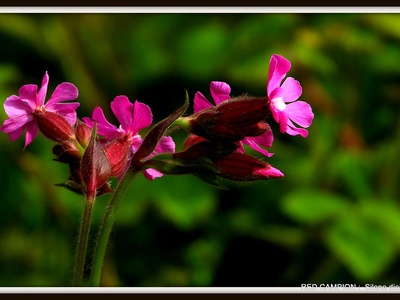
Red campion
Vivid pink funnel-shaped flowers with notched petals, common along shaded lanes and woodland margins. Perennial that forms colonies and is attractive to bees and moths.
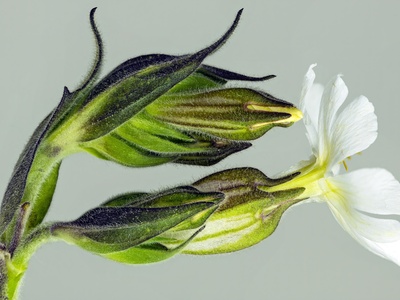
White campion
Creamy-white, inflated calyx and delicate star-like petals open mainly at night. A common perennial in disturbed and sunny habitats, often visited by moths for nectar.
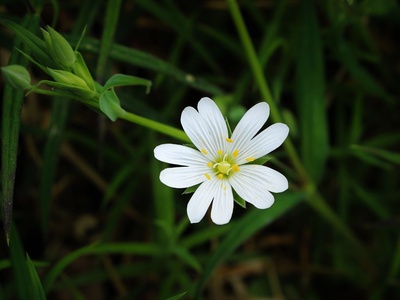
Greater stitchwort
Starry white flowers with deeply divided petals on slender stems; a typical spring wildflower found in hedgerows and lightly shaded grassy places, brightening lanes and rides.
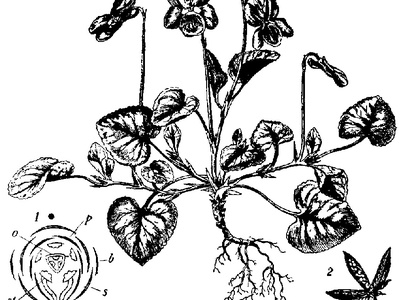
Dog violet
Small purple-violet flowers with heart-shaped leaves at the base. A common woodland and grassland species providing nectar and host plants for fritillary butterflies.
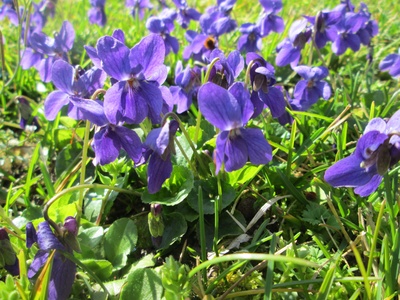
Sweet violet
Sweet-scented violet flowers low to the ground in early spring. Often found in old hedgerows and shady corners, historically used for perfumes and candied sweets.
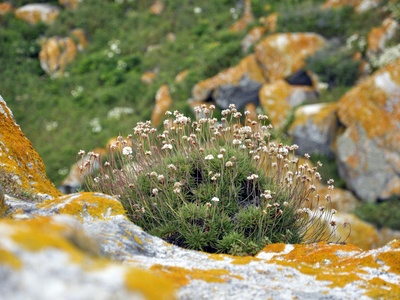
Sea thrift
Tight globe-like clusters of pink or white flowers on stiff stems above clumps of grass-like leaves. Salt-tolerant and common on exposed sea cliffs and coastal grassland.
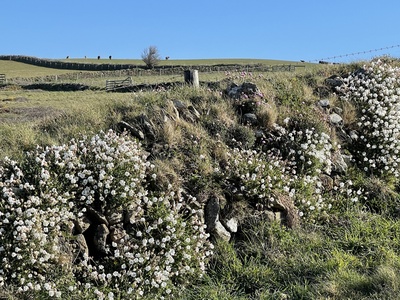
Sea campion
White, lantern-like flowers often with hairy calyx, thriving on exposed coastal rocks and cliffs. Hardy and salt-tolerant, often forming carpets that withstand harsh marine winds.
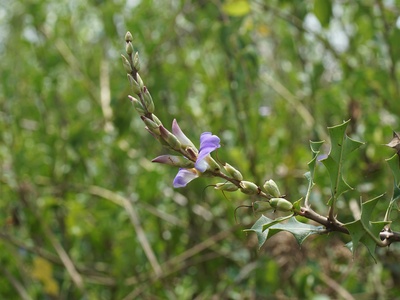
Sea holly
Striking spiky, silvery-blue flowerheads with maritime leaves. A dune specialist, known for its architectural appearance and adaptation to dry, sandy coastal habitats.
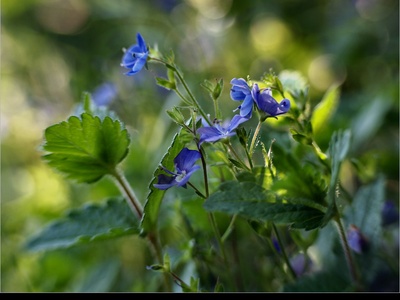
Germander speedwell
Bright cobalt-blue flowers with a white eye on low stems in spring. Common in grassland and bank edges, attractive to bees and small insects.
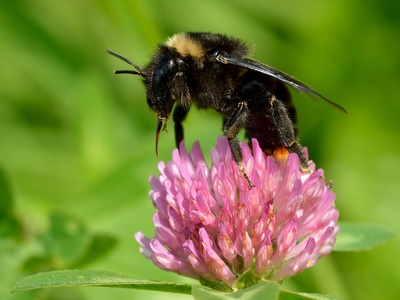
Red clover
Rounded heads of pink-purple tubular flowers; important forage for bees and livestock. A nitrogen-fixing legume common in meadows, roadside verges and rough grassland.
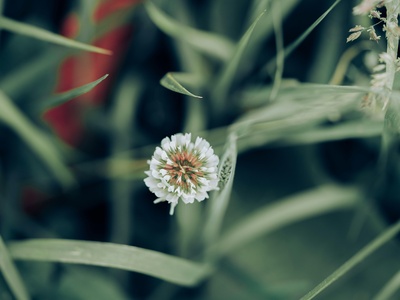
White clover
Low-growing with white flower heads and trifoliate leaves; widespread in grazed and managed grasslands. Valuable nectar source and lawn companion often seen in short turf.
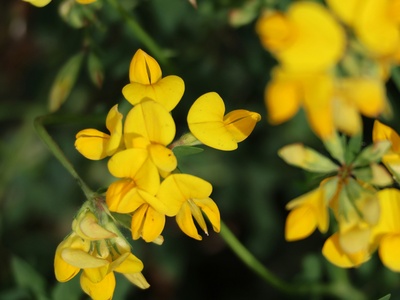
Bird’s-foot trefoil
Low mat-forming legume with bright yellow pea-flowers sometimes flushed red. Important meadow species and foodplant for many butterfly larvae, common on poorer soils.
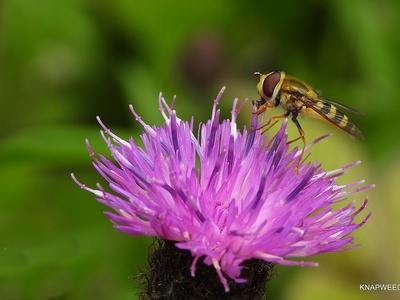
Common knapweed
Purple thistle-like flowerheads on tall stems; a key meadow species supporting a wide range of pollinators, especially bees and butterflies.
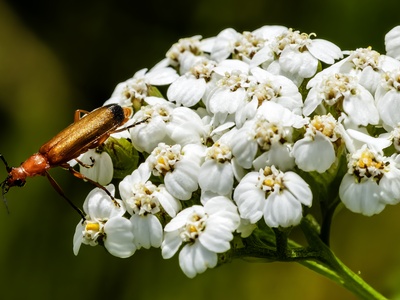
Yarrow
Flat-topped clusters of small white (sometimes pink) flowers on feathery foliage. Robust perennial of dry grassland and roadside banks, historically used medicinally and for insect habitat.
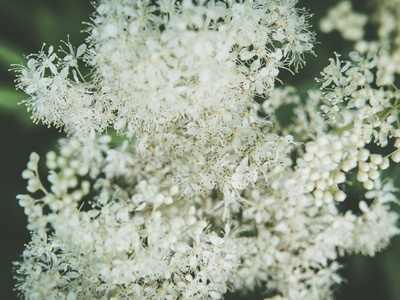
Meadowsweet
Clusters of fragrant creamy-white flowers with a honeyed scent found in wet meadows and along rivers. Historically used for flavoring and medicinal purposes; attracts many insects.
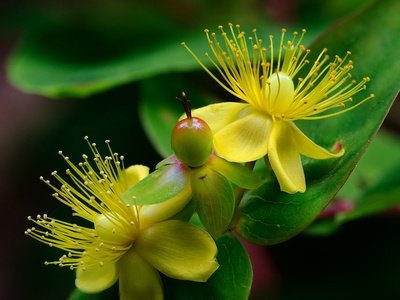
St John’s-wort
Golden yellow star-like flowers with distinctive black dots along petals. A sun-loving perennial of dry grassland that was once used medicinally and is attractive to pollinators.
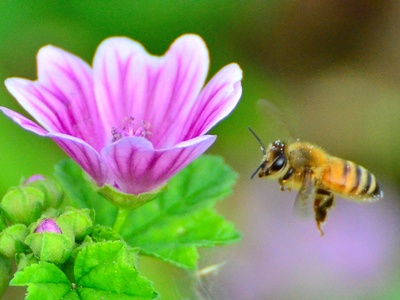
Common mallow
Lavender-pink bowl-shaped flowers with darker veins on tall stems. A hardy, showy wild plant of disturbed ground and verges, useful for pollinators and historically valued for its mucilaginous leaves.
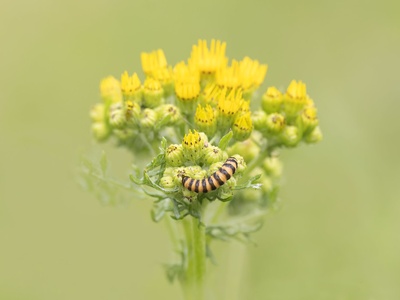
Ragwort
Clusters of bright yellow daisy-like flowers on tall stems. A common ruderal species important to many specialist insects but toxic to grazing livestock if eaten in quantity.
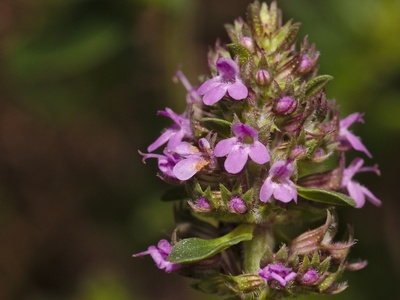
Selfheal
Low, creeping perennial with dense purple flower spikes. Common in short grass and lawns, attractive to bees and an indicator of unimproved grassland.
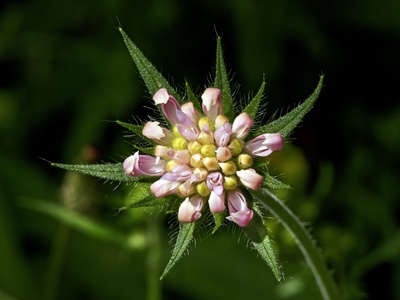
Field scabious
Pale lilac pincushion flowerheads on tall stems; a nectar-rich meadow flower much loved by butterflies and bees, common in old pastures and roadside banks.
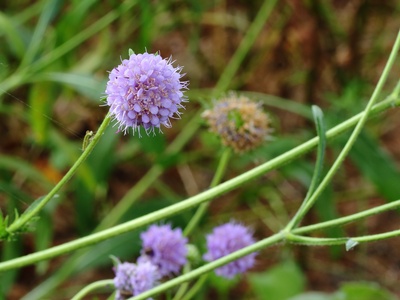
Devil’s-bit scabious
Rounded lilac-blue flowerheads on erect stems in late summer. Favours damp unimproved meadows and is the main foodplant for the marsh fritillary butterfly.
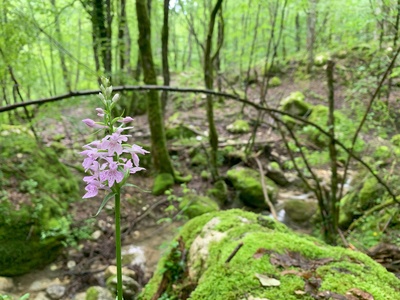
Common spotted orchid
Pale pink to purple spikes with spotted leaves and intricate lip patterns. Widespread orchid of grassland and open woodlands, often found in unimproved soils.
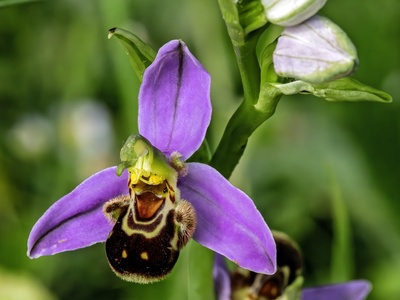
Bee orchid
Unusual flower mimicking a bee’s shape and pattern to attract pollinators; pink hooded flowers on low spikes. Striking and much-photographed on chalk downland and dry grassland.
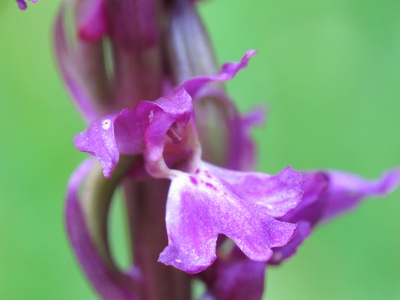
Early purple orchid
Violet to pink clusters of hooded orchid flowers in spring; among the earliest native orchids, often found in woods and calcareous grassland.
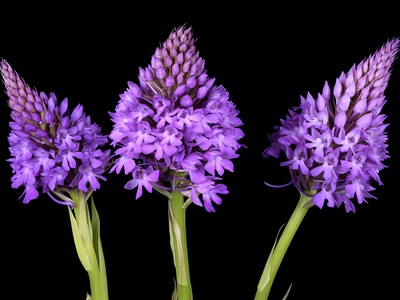
Pyramid orchid
Conical spikes of densely packed pink-purple flowers forming a pyramid shape. A sun-loving species of calcareous soils and coastal cliffs, attractive to bees and butterflies.
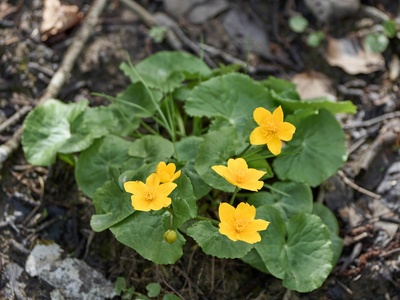
Marsh marigold
Glossy yellow buttercup-like flowers in early spring along streams and wet flushes. A damp-ground specialist that lights up wetlands and provides early nectar for insects.
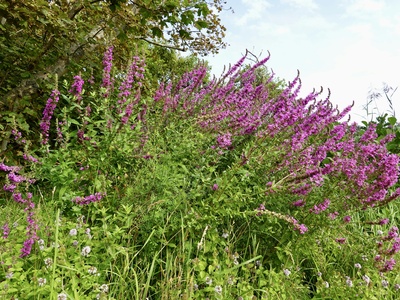
Purple loosestrife
Tall spikes of magenta-purple flowers in wetland habitats. A common reedbed and marsh species, providing nectar for insects and adding color to summer wetlands.
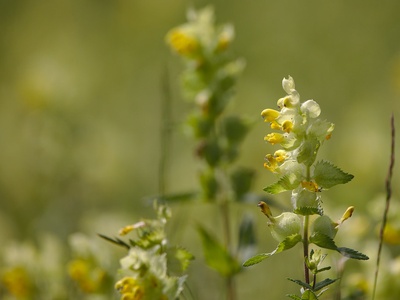
Yellow rattle
Striking yellow, inflated flowers on semi-parasitic stems that suppress grass vigor, helping wildflower diversity. Important in conservation hay meadows and restored grasslands.
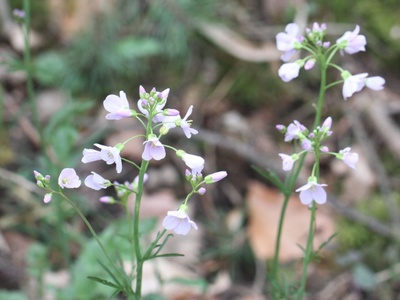
Cuckooflower
Pale pink to white cruciform flowers in spring on short stems. Also called lady’s smock, common in damp grassland and an early nectar source for insects.
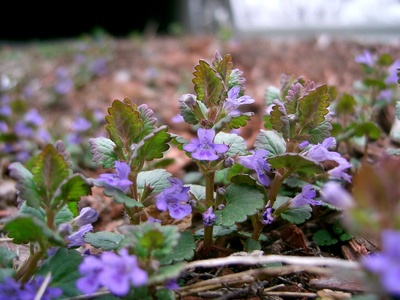
Wild thyme
Low mat-forming aromatic herb with tiny purple-pink flowers. Thrives on thin, well-drained soils and cliff tops, attracting bees and adding a thyme scent to warm sites.
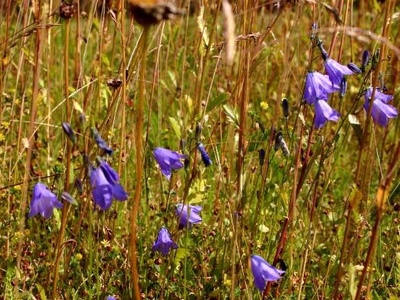
Harebell
Delicate nodding blue bell-flowers on wiry stems, often in open, exposed places. A graceful, long-flowering species of dry grassland and coastal slopes.
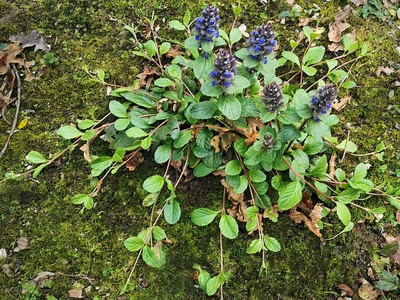
Bugle
Dense purple-blue flower spikes above glossy groundcover leaves. Spreads by stolons to form mats in shady, damp places and is valuable for early nectar.
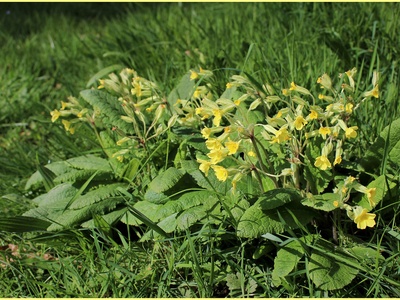
Oxlip
Clustered pale yellow flowers on stalks in spring, rarer than cowslip and primrose. Found in ancient woodland and hedgerow areas, often indicating long-established habitat.
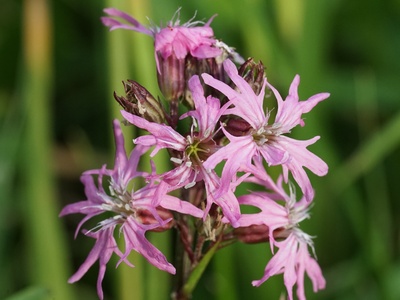
Ragged robin
Distinctive pink flowers with deeply cut petals giving a ragged appearance. Prefers damp, species-rich meadows and is a striking component of traditional wet hayfields.
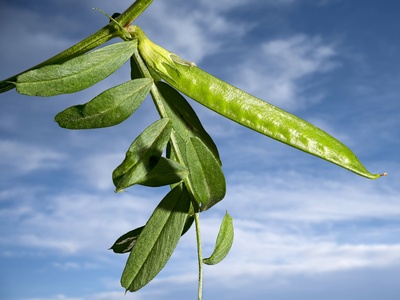
Common vetch
Twining peas with clusters of purple-pink pea-flowers. A climbing legume common in arable margins and rough grassland, important for pollinators and as a green manure historically.
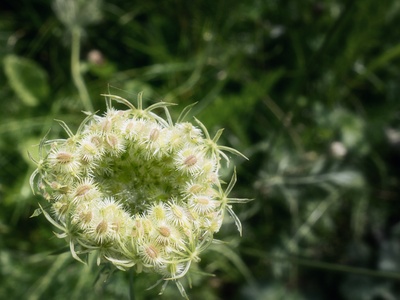
Wild carrot
Umbel of delicate white flowers with a central dark floret sometimes called “Queen Anne’s lace.” Common on dry grassland and road verges, providing habitat for many insects.
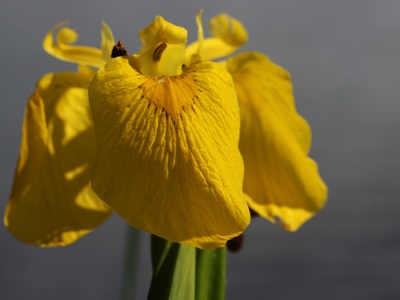
Yellow flag iris
Large bright yellow iris flowers along wet margins and ponds. A robust perennial of wetlands, providing bold colour and shelter for aquatic insects and amphibians.
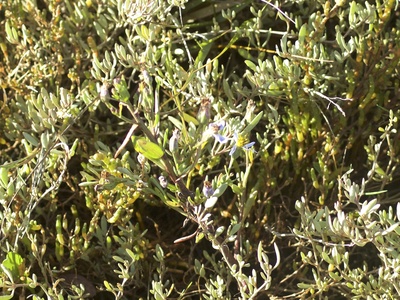
Sea aster
Pale mauve to white daisy-like flowers tolerant of saline conditions. A specialist of saltmarsh and estuary margins, supporting specialised coastal invertebrates.
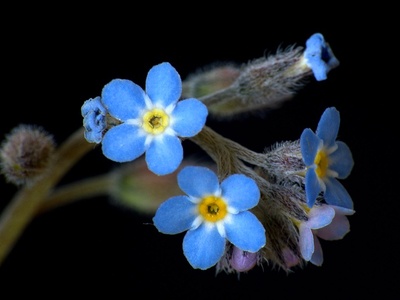
Field forget-me-not
Small sky-blue flowers with yellow eyes forming carpets in spring and early summer. A familiar annual or short-lived perennial of open ground and field edges.
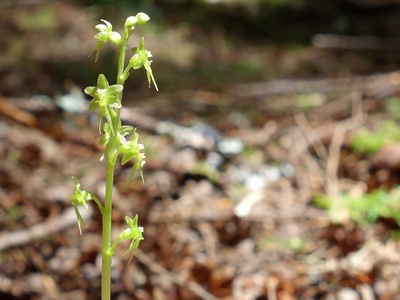
Twayblade
Slender spikes of small greenish flowers on a low stem with paired basal leaves. A widespread, modest orchid of damp woodlands and grassland, often overlooked.
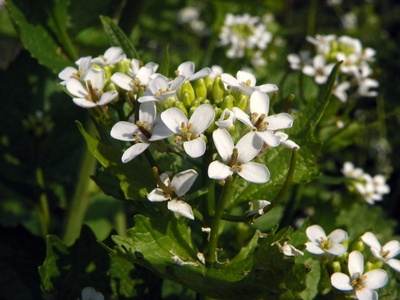
Garlic mustard
Tall stems of white cruciform flowers above garlicky-scented leaves in spring. Native and widespread in shaded hedgerows and woody clearings, historically used as a spring green.
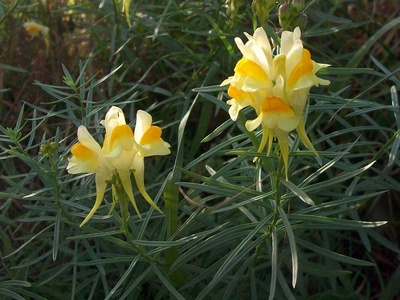
Common toadflax
Small yellow and orange snapdragon-like flowers on upright stems. A resilient roadside and disturbed-ground species that brightens dry banks and supports pollinating insects.
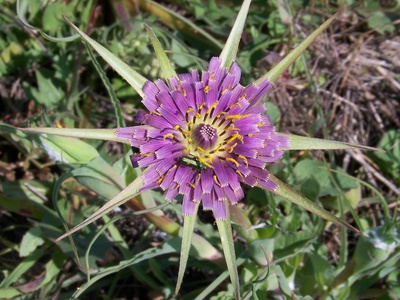
Goat’s-beard (Salsify)
Large yellow dandelion-like flowers opening in the morning, later forming distinctive silvery seed heads. A tall, showy meadow plant of open grassland and field margins.
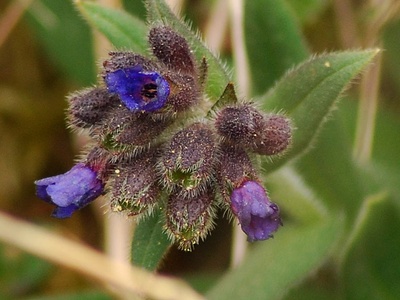
Lungwort
Spotted, oblong leaves with clusters of early spring flowers in shades of pink and blue. Woodland-flowering perennial that prefers shady, moist soils and is attractive to early pollinators.
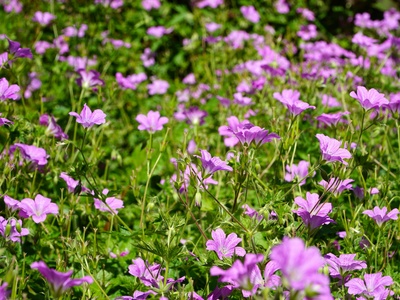
Meadow cranesbill
Tall blue-purple geranium flowers on erect stems in summer. A perennial of damp meadows and field margins, offering nectar for bees and attractive seed heads for birds.
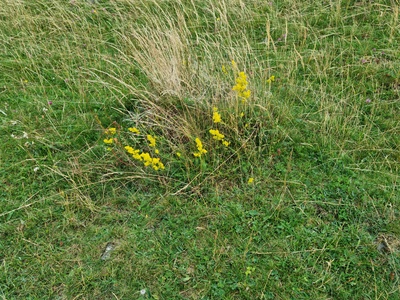
Lady’s bedstraw
Scented yellow clusters of tiny flowers on sprawling stems. Common on chalk and dry ungrazed grassland, historically used for stuffing mattresses and as a dye plant.
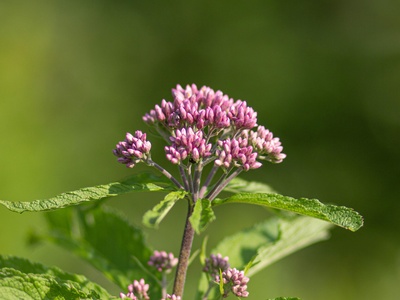
Hemp agrimony
Tall clusters of fluffy pinkish-purple flowers attracting large numbers of insects. A wetland perennial common in damp places, serving as a late-summer nectar source.
